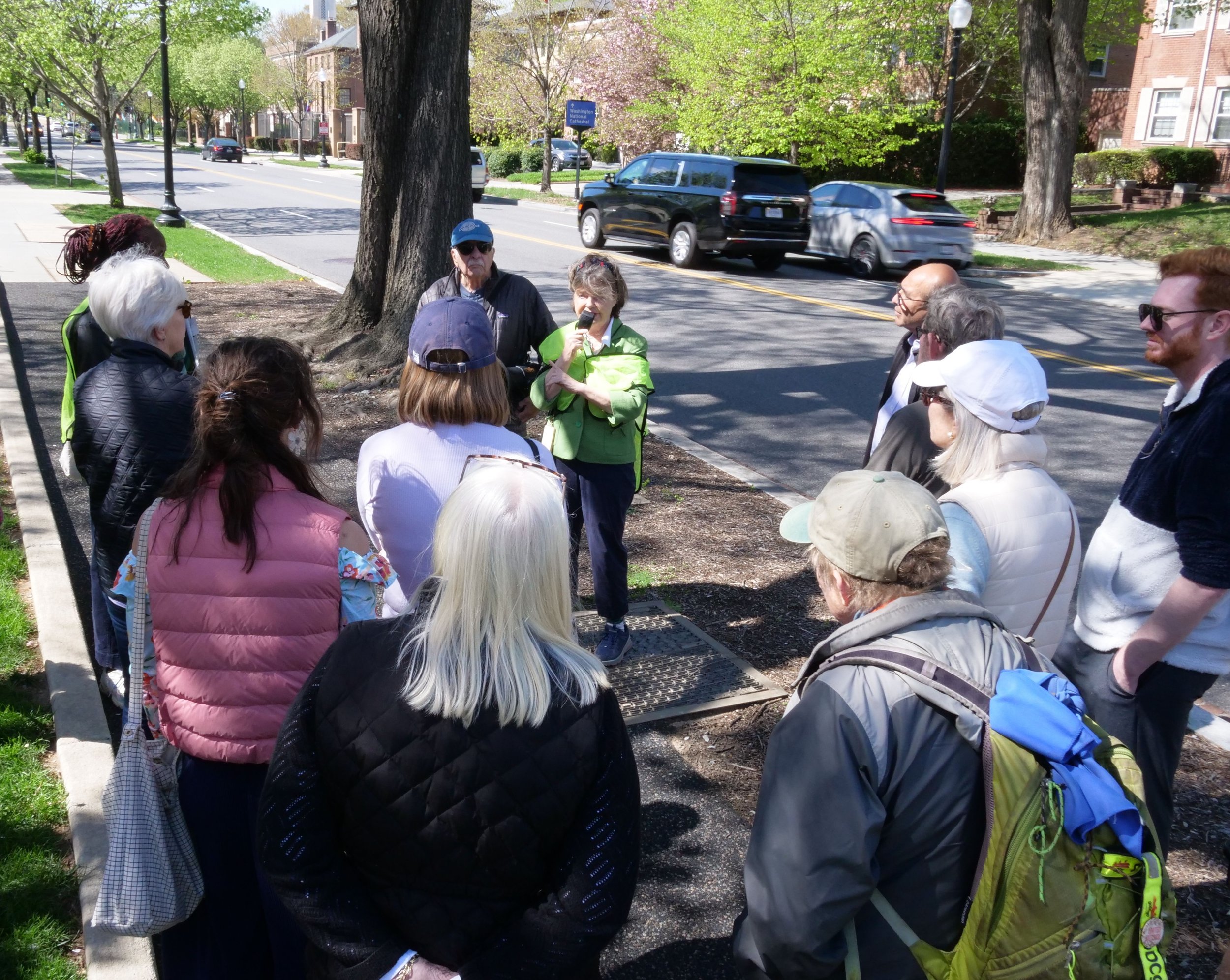DEBTHINK
Bio | Books | Trees
Years ago on my walks along Massachusetts Avenue in Washington DC near our home, I was shocked at the number of neglected trees. A small group of us began rescue, towing a red wagon loaded with water buckets and tools. We smiled and waved at the windows of these fine properties, even as we connected our hose to their spigots to water nearby trees. Crazy, messy, happy.
The weekend hobby grew into a volunteer nonprofit Restore Mass Ave. To date RMA has arranged the planting of some 600 trees of the best species and site for the historical space. We persuade nearby owners to care for public and private trees near their homes and embassies. Maybe 1000 are cared for on the two-mile route known as Embassy Row.
Massachusetts Ave sidewalk in 1913 had double rows of American lindens. These stretched for five miles across the city, cleaning the air and making the public space beautiful. (Photo: DC Public Library)
Right off I trekked to the District’s Public Library. From a drawer marked “Massachusetts Avenue” I drew a cellophane-wrapped photo of the sidewalk in 1913. (The present hotel was flanked by suffering trees.) The double row of this noble species was planted ca 1880 to define L’Enfant’s great thoroughfare; it was extended west in 1890-1910. So the giant trees around us were more than a century old. Exploring the ground we found the stumps of trees of the original ‘second row.’ This photo inspired our mission.
Join us! Embassy and US volunteers gather for planting 14 second row trees at 7 embassies and a church in October 2010. (Photo: Oliver/Casey Trees)
Full restoration needed partners. The District Urban Forestry Administration planted lindens where curbside trees it planted before had died. (Achtung! Nobody cares for new city trees unless local owners or we do.) The Casey Trees foundation enabled planting of shade trees in the lawns. (See Join Us! photo).
Then two years of utility and road-digging plus the pandemic stopped planting and care. We urged neighbors and the road workers to protect the trees. We testified for greener infrastructure. Today many trees look okay above ground, but below, damage to root systems will cost canopy.
New streetlights were a slight win. Our road now has the lowest temperature LEDs that the District allows on major arterial roads. The historic reproduction lightpoles are the shortest at 16’. The leaf crowns of our trees can arch above the lamps and connect, so there is less uplight to the night sky and more habitat.
Canopy Growth in our Project Area grew 13% from 2006-2016, when the District’s canopy grew 2.5%. Light green shows the new growth; red is loss. Full map at https://restoremassave.org/trees/canopy-growth/.
I enjoy working with diplomats; foreign missions occupy maybe half of he Beaux Arts buildings on our route. With almost no prompting, embassy staff ‘get it’ that trees must be cultivated to grow large and give ecosystem benefits. We share knowledge - sometimes with the wagon and tools.
World Forum Tree Awards presented to 7 ambassadors and the Department of State OFM, at Embassy of Italy, Oct 17th 2023. (Photo: Ari Golub/RMA)
The RMA program was featured at the World Forum on Urban Forests in Washington, DC in October 2023. We partnered with the District Urban Forestry Division to make awards to seven ambassadors whose embassies showed special care for trees, from A for Algeria (recent) to Z for Zambia (since 2008).
New tree-plantings and stewardship continue to be needed - and we are happy to assist. Our Grand Avenue Revival booklet which won a city prize in 2025, will likely be useful now, as we and partners secure this resilient, historic streetscape for the future.
Spring Tree Walk: Deborah and the RMA team lead a public tour of great trees and tree issues, April 13, 2025. (Photo: Lennon Moldonado/RMA)
May, 2025






